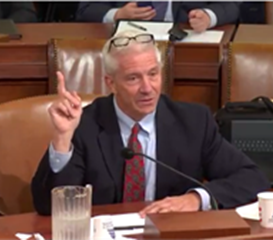Major Win - Medicare Payment Advisory Commission (MedPAC) Abandons Efforts to Implement IRF/SNF Site-Neutral Payment
After years of advocacy by AAPM&R and its physician volunteers, the Medicare Payment Advisory Commission (MedPAC) announced in its June 2024 report to Congress that it is halting its work on developing a recommendation for site-neutral payment policies for care provided in the Inpatient Rehabilitation Facility (IRF) setting. This represents a major victory for both providers and patients in the IRF setting and comes after intense, sustained advocacy from AAPM&R and other stakeholders.
In its report to Congress, MedPAC acknowledges that comparing patients treated in IRFs and SNFs and their outcomes was significantly more challenging than expected. For background, MedPAC is an independent legislative branch agency established by Congress in 1997 to advise on issues affecting the Medicare program, including payment systems. On September 7, 2016, former AAPM&R President, Greg Worsowicz, MD testified at the U.S. House of Representatives Ways and Means Committee's Health Subcommittee hearing on Incentivizing Quality Outcomes in Medicare Part A. His testimony placed an emphasis on improving the quality and efficiency of patient care through payment reform measures and value-based purchasing in the post-acute care (PAC) sector.
Over the years, the Academy worked to ensure that physiatry’s voice was taken into account during MedPAC’s ongoing deliberations on this issue and collaborated with other stakeholder organizations to advocate against site-neutral payment proposals and the development of a Unified Post Acute Care Prospective Payment System. These efforts included submitting and co-signing numerous comment letters, participating in multiple Technical Expert Panels (TEPs), meeting with Congressional offices and MedPAC staff, testifying before the U.S. Congress, and creating Principles for a Medicare Unified Post-Acute Care Payment System to advocate for prioritizing patient needs.

On September 7, 2016, former AAPM&R President, Greg Worsowicz, MD testified at the U.S. House of Representatives Ways and Means Committee's Health Subcommittee hearing on Incentivizing Quality Outcomes in Medicare Part A. His testimony placed an emphasis on improving the quality and efficiency of patient care through payment reform measures and value-based purchasing in the post-acute care (PAC) sector.
G2211 Add-On Code
Effective January 1, 2024 the Centers for Medicare and Medicaid Services implemented payment for G2211, a HCPCS add-on code to be billed in conjunction with an office/outpatient evaluation and management (E/M) code in certain instances. Learn more about how to use this resource and applications for physiatry.